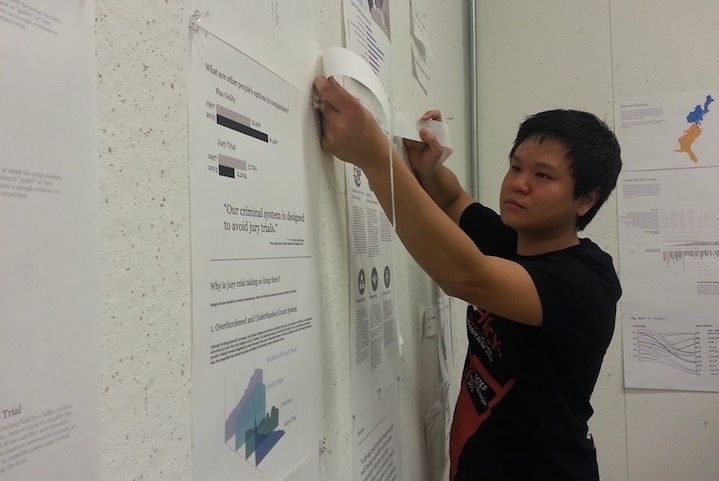Two weeks before the project was due, we started to finalize our infographic project. We met with Mary D. Fan, the Henry M. Jackson Professor of Law in order to get her input and feedback for final validation of our infographic story. Professor Fan's feedback made us realize that although court processing delays is a problem that exists, it happens most likely in the Supreme Court setting for solving breaking news such as the Bronx and Baltimore event in the nation. Incomparable, the backlogs are not that severe in the general municipal courts.
Professor Fan further suggested us to focus on explaining plea bargain, which is also part of the judicial process. Plea bargains are misunderstood. Due to TV shows and other forms of media, many people believe criminal court cases go to trial, but in reality most cases end in plea deals. The plea bargain is controversial, but it is essential in the jurisdiction process. We were running out of time, but we scratched our project and started in a new direction because we thought a plea bargain is definitely a more interesting aspect in the court process that is worth exploring and educating the public about.














